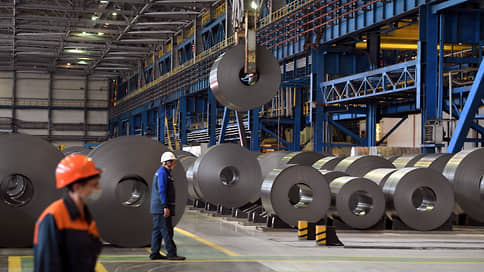Prices for structural steel pipes turned out to be minimal in two years

Prices for structural steel pipes by mid -April fell to two -year minimums. One of the reasons is a strong surplus of capacities and their simple, especially among large companies, against the backdrop of a total drop in steel prices and demand for it in the domestic market. Persons for the production of structural pipes exceed demand by more than three times. According to experts, both small enterprises and large players can reduce production in this segment. At the same time, the latter can suffer even stronger due to the more expensive logistics and low marginal work with the IZHS segment, which so far shows the most stable consumption.
By mid -April, the cost of structural steel pipes (profile, water and gas, special and general -purpose pipes) dropped to minimums in almost two years. So, according to RASMET RASMET, on April 20, the cost of a ton of water and gas pipes was 64.6 thousand rubles, this is a minimum of July 2023. The cost of a ton of an electric welding pipe amounted to 63.3 thousand rubles, which became a minimum since March 2023.
One of the reasons (in addition to the general drop in steel prices; see “Kommersant” from March 29) is a strong surplus of capacities and their simple, especially among large companies. The capacities exceed demand by more than three times, and all this is emphasized by Kommersant’s interlocutors, in conditions of stagnation of internal demand (see “Kommersant” of April 23).
In 2024, the production of structural pipes of small and medium diameter (MSD) amounted to 5.8 million tons – by 5% less than a year earlier, a source familiar with industry statistics told Kommersant. The main consumer of such pipes is the construction sector. The dynamics of consumption in the domestic market of such pipes in 2024–2023 was negative, the indicator itself was about 4 million tons. Growth – by 8% – was observed only in the segment of boiler pipes used in mechanical engineering (see “Kommersant” from January 29). Other pipe categories for mechanical engineering showed a decrease in demand: bearing (decline by 28%), total purpose (minus 7%) and stainless (minus 6%). The pipes used in construction also showed a decline: in the segment of general purposes, it amounted to 7%, in the profile segment – 5%. And given that the main share among the structural pipes of the MSD is occupied by the pipes for construction, the decrease by 5–7% actually has a larger effect, the interlocutors of Kommersant in the industry emphasize.
In the first quarter of 2025, 1.2 million tons of structural MSD pipes were produced in Russia, which is 18% less than a year earlier. According to Rusmet RA, the volume of consumption of structural pipes according to the results of the first quarter showed a similar dynamics – minus 14%. The head of the analytics department for the securities market of Alfa Bank Boris Krasnozhenov expects a reduction in demand in the segment to the level of 1.9-2 million tons during the year. “The dynamics of the decline may change if the key rate improves. If we assume that the key rate will return in 2023, then the decline indicator for the year will not be higher than 7%, and from 2026 the growth will be growth, ”says Viktor Korotny, director of Ramlom.com.
Experts expect that the production of structural pipes can reduce both small enterprises and large players. “In the next few months, against the background of the start of the construction season and more active replenishment of warehouses by traders (see Kommersant on April 7) there will be periods of growing demand and prices for general purposes,” says industrial expert Leonid Khazanov. “But these will be short -term jumps: the global trend for a decrease in demand, production and price will be preserved. Companies that can observe the principle of production near the consumer will win, Mr. Korotnye admits. “These are pipe workshops and small plants with a capacity of up to 300 thousand tons per year, which use flat rental for pipes,” the expert says. “Large factories will be more difficult taking into account more expensive logistics and increase the share of small consumers – statistics show that the share of the IZHS significantly exceeds the construction of apartment buildings.” However, he indicates, it must be borne in mind that the specific metal consumption in IZHS is less.
A promising segment of the consumption of pipes of MSD can be the development of gas delivery networks from gas pipelines to end consumers at the final stage, says Victor Korotny. “There is a potential demand in Russia for many tens of thousands of kilometers, but this requires state support,” he warns.







